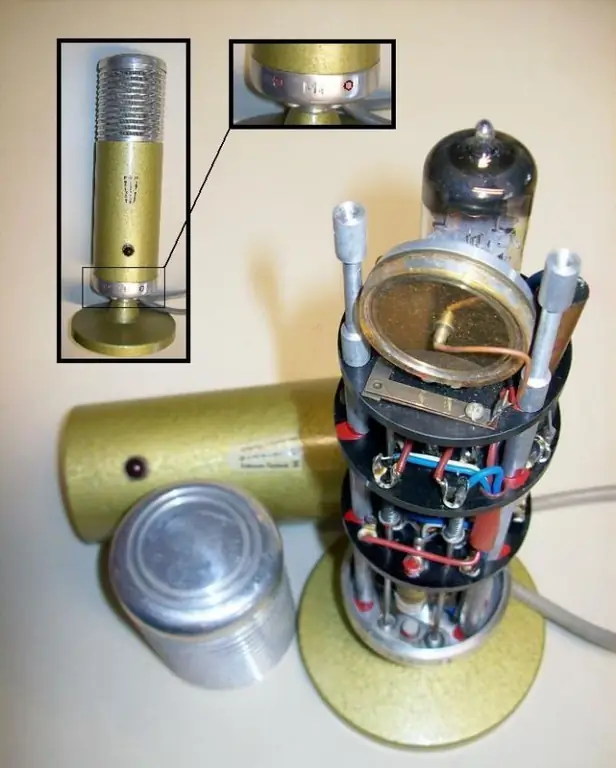There are at least three types of condenser microphones. Some of these devices can be connected directly to the computer, while others will have to be coordinated with the input of the sound card.

Instructions
Step 1
Before connecting any microphones to your computer, check the pinout of the corresponding jack on your sound card, which is usually red. This jack is monaural, and the output that is common in a normally stereo jack is here connected to the middle one. There are also monaural plugs in which the appropriate connection is made, and if there is none, make it from stereo by making the appropriate connection. Never connect such plugs to stereo headphone or speaker jacks to avoid causing a short circuit.
Step 2
The sound card has a special capacitor and resistor circuit. Through a resistor, a supply voltage is applied to the microphone (positive with respect to the common wire), and through a capacitor, the variable component of the signal is removed from the microphone. Therefore, in the event that you have a 1.5-volt electret microphone, simply connect it to this jack through the plug, observing the polarity (minus to common wire). Before that, determine the polarity of its terminals: the negative terminal is connected to the case.
Step 3
If the microphone is powered by 3 V, the signal will be subtle when powered from a sound card. Therefore, the decoupling chain must be placed outside. Apply 5V to the microphone (from the computer's power supply) through a 5K resistor, also observing polarity. The voltage drop across it will be such that the microphone will have just 3 V. Apply the signal to the input of the sound card through a paper capacitor with a capacity of about 0.1 microfarad. In all cases, make connections with the machine turned off.
Step 4
There are also non-electret condenser microphones. There is no internal source of constant polarization in them, just as there is no preliminary cascade. It is not possible to directly connect such a microphone to a sound card. Use a dedicated mixing console designed to work with a condenser microphone. And send the signal from the line-out of the console to the computer.
Step 5
But what if all connections are correct, but there is no sound? The reason for this may be software-based. Both Linux and Windows have a dedicated virtual mixing console program. It has a virtual microphone volume control, as well as a switch. Check their position and change if necessary.






